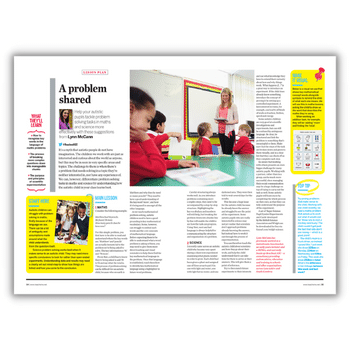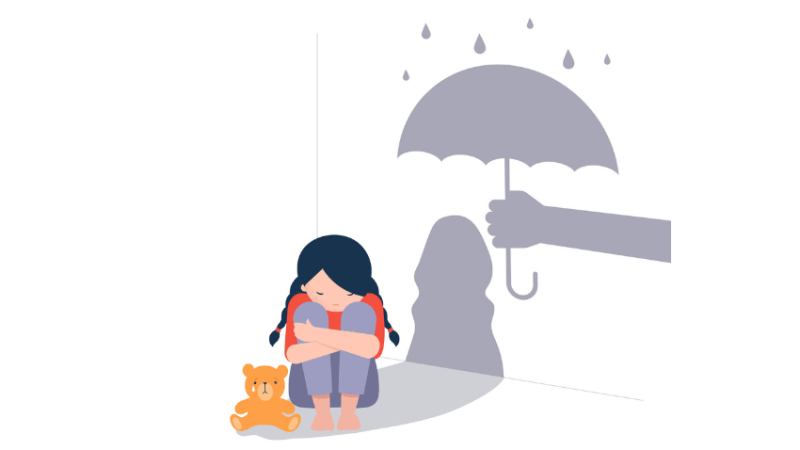SEN teacher – Streamline your record-keeping

Demystify high-quality teaching and learning for SEND to create more efficient ways of working with the limited time and resources you have…

On my travels supporting schools across the country, I’ve spoken with many a SEN teacher concerned about the level of support they’re able to provide to their pupils with special educational needs and disabilities (SEND). Lack of budget, time and expertise usually come high in the reasons why.
What I’m hearing from teachers is also echoed in the 2023 Pearson School Report, where SEND support is cited as one of the top challenges facing primary schools this year. Whilst I can’t wave a magic wand and create more time or money, there are processes that can be put in place to help support you and your pupils. And believe it or not, they’ll fit on just three A4 pages.
Page one: Match the child’s needs with the right teaching strategies
In March 2020, the EEF’s guidance report, Special Educational Needs in Mainstream Schools, set out five strategies to underpin high-quality teaching for SEND. These are: flexible grouping, cognitive and metacognitive strategies, explicit instruction, technology, and scaffolding.
Knowledge and implementation of these strategies forms a solid foundation for supporting students with SEND, which we can build upon when looking to refine teaching practice.
A powerful way to use these strategies is to map them to the four areas of need laid out in the 2015 code of practice: cognition and learning; communication and interaction; social, emotional and/or mental health; sensory and/or physical.
Every learner with SEND has needs that fall broadly into one of these areas, and if we can learn a few specific strategies for each one, then we can select an armoury of teaching tools that builds upon the five EEF strategies (see Fig.1).
| Cognition and learning | Communication and interaction | Social, emotional and/or mental health needs | Sensory and/or physical |
|---|---|---|---|
| Pre-learning vocabulary | Images | Enlarged resources | Give time to respond (seven seconds) |
| Writing frames | Checklists | Enlarged images | Question prompts |
| Support for presentation | Specific feedback | Adjusted seating | Sentence starters |
| Key terms | Language of choice | Seating plan | Chunking of information |
| Spelling prompts | Praising the effort as well as the result | Gap fills | Writing frames |
| Structure strips | Consistency | – | Language of choice (you have two options) |
Page two: A bare-bones pupil passport
There are many ways SENCOs can provide information to teachers on the SEND requirements of a child. These are often called ‘pupil passports’, ‘IEPs’ or ‘individual support plans’, and may be two or three pages long.
In a school I recently visited, the ‘passport’ included a list of 13 strategies for the teacher to choose from. In my opinion, this is too much and doesn’t help the teacher.
Less is definitely more; I feel it’s much better to have three clear ‘smart’ targets for the learner, with one suggested strategy for each. These can be set out on a single sheet with some brief essential information on the child and a note of reasonable adjustments that need to be made, followed by the ‘plan, do, review’ section.
The ‘assess>plan>do>review’ cycle for pupils with SEND, known as the ‘graduated approach’, is set out in the SEND Code of Practice: every learner with SEND needs a plan that teachers must implement in their lessons and review on a termly basis.
Logistical challenge
This is fine and is definitely needed, but on top of this, teachers must carry out a review with parents/carers ‘at least three times a year.’ This can be a logistical and practical challenge.
In most schools I have visited, a child’s passport or individual learning plan is separate from the review document, however, when planned correctly the passport can support both.
If you can, lay out a concise ‘plan’ including three targets for the learner. Include a ‘do’ section stating the strategies being used to support the delivery and a ‘review’ section where the learner and their parents can comment, and where teachers can record whether a target has been met. You’ll then have two documents in one. Win, win!
It’s easier for parents to understand and agree on a small set of clearly written targets and know what teachers will be doing so they can more effectively support their child at home; similarly, the child knows what is expected.
In this whole process, please don’t forget your learner. It’s really important for them to be involved as much as possible. They need to know their targets from the outset and be able, if they can, to talk about them and consider how they’re doing. This puts the pupil at the centre and supports their development.
The third page: Monitoring, but minimised
As teachers and leaders, we have a responsibility to monitor the implementation of the plans in practice. “More paperwork”, I hear you say. But not necessarily.
A checklist for all learners with SEND is an easier way to approach monitoring. The checklist could set out the details of any reasonable adjustments, the strategies for each learner, and a monitoring schedule (a simple table with columns for week 1, week 2, etc) to support regular monitoring.
The checklist can be divided into years or phases – whatever works for your school. Its aim is to ensure that suitable strategies are in place for each child and that the teacher feels supported; it’s a quality assurance and teacher support process in one.
So there we have it: a streamlined solution for SEND record-keeping. Three concise but informative pages: a model for high-quality teaching and learning for SEND, a learner passport or individual learning plan, and a monitoring section, all tied in with the delivery of the graduated approach.
This simple principle of making documents as short and clear as possible will reduce the admin burden so many teachers, leaders and headteachers feel, and allow everyone more time to spend doing what they love: the important job of teaching.
The view from the classroom
Thousands of teachers and leaders shared their opinions on education for the 2023 Pearson School Report:
Half of primary teachers predicted that supporting students with SEND adequately would be a top challenge for their school this year. Three quarters thought that SEND would result in a barrier to pupils’ learning over the next six months.
When asked what would help improve provision for learners with SEND in mainstream schools, many teachers spoke of the extra support they still needed in the form of additional staff or training. Specific suggestions included easier access to diagnostic testing, increased SEN teacher training and more teaching assistant support.
Despite progress that still needs to happen, around 60 per cent of primary teachers believe that what is taught in schools today is more inclusive and diverse than it was five years ago. More than 90 per cent of primary schools have taken steps to support this, including:
- celebrating more diverse role models
- focusing on teaching tolerance and empathy
- using more inclusive resources
- using more accessible resources to support students with SEND.
A third of primary schools are using purpose-built software to support pupils with SEND, and the same proportion reported that new technology over the past two years has improved accessibility for learners with SEND.
Malcolm Reeve is a whole-school and national SEND leader.












